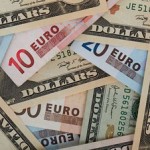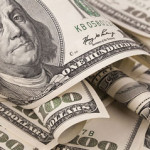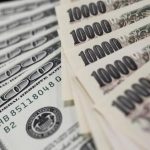The dollar slipped on Monday; The Australian dollar led modest gains in Asia

The dollar slipped on Monday in a choppy session as investors tried to navigate their way through an unsettling rise in coronavirus infections and weigh whether it would delay an economic recovery.
The Australian dollar led modest gains in Asia as the head of the country’s central bank said the impact of the COVID-19 pandemic would not be as bad as first feared.
But a record spike in new global cases has capped moves, while moves by Beijing and parts of Australia to re-introduce some restrictions added to the cautious mood.
The risk-sensitive Aussie reversed early losses and was last up 0.3% at $0.6854, the New Zealand dollar rose 0.3% to $0.6422.
Against a basket of currencies, the dollar gave back a bit of last week’s gains and fell 0.2% to 97.501.
“We’ve tried both sides of the story in Asia and as the day’s worn on the bulls have got the upper hand,” said Westpac analyst Sean Callow. “That’s helped the Aussie to avoid breaking any key levels. But it has not been a conclusive day.”
The safe-haven yen hardly moved and was last at 106.87 per U.S. dollar, not far from a one-month high of 106.58 hit earlier this month – underlining the elevated caution.
“We expect the FX markets to remain caught between recovering economic indicators and concerns about a second-wave of COVID-19 infections in the week ahead,” analysts at Barclays said in a note.
Barclays said gains in the euro are possible if Purchasing Managers Indexed due on Tuesday beat expectations and recommended buying euro, with a $1.14 target.
The single currency last traded 0.2% firmer at $1.1200 after dipping to a three-week low of $1.1168 in early trade as divisions among European Union leaders over how to structure a planned COVID-19 recovery fund kept investors wary.
The pound held just above a three-week low at $1.2393, weighed down by prospects of a no-deal Brexit, as little progress has been made in trade discussions between Britain and the European Union.
LOCKDOWNS LINGER
Total global coronavirus cases are now over 8.8 million and focus has been on whether this may lead to fresh lockdowns.
Broadly that is seen as unlikely, even though localised restrictions have been re-imposed in Beijing, and Australia’s Victoria state.
Yet concern about such a possibility has, for now, stalled surging gains in commodity currencies such as the Australian dollar, which along with the New Zealand dollar has been rangebound for over a week.
The Reserve Bank of New Zealand announces its latest benchmark interest rate settings on Wednesday. It is all but certain to keep rates on hold at 0.25%, leaving markets to focus on its tone and on talk of negative rates in the future.
“Unlike in Australia, we think the RBNZ’s dovishness will blunt any potential (kiwi) strength in 2020,” Morgan Stanley analysts said in a note.
Barclays also said it expects continued pressure on the kiwi.
Besides Tuesday’s PMI data and German sentiment surveys, investors will also be looking to U.S. consumer confidence figures out later the same day to gauge whether encouraging signs of recovery from May can be sustained.
A jump in net short bets on the U.S. dollar last week to their highest since 2018 suggests investors are dialling back safe-haven positions on views the world’s rapid economic recovery will continue – leaving plenty of room for surprises on the downside.
Source: CNBC



























